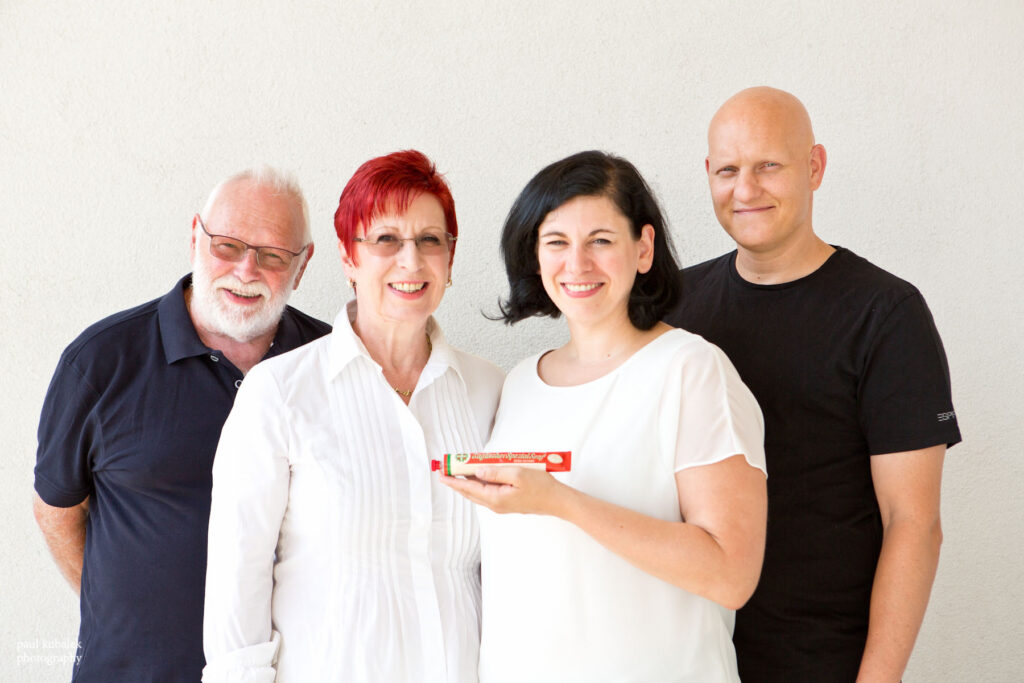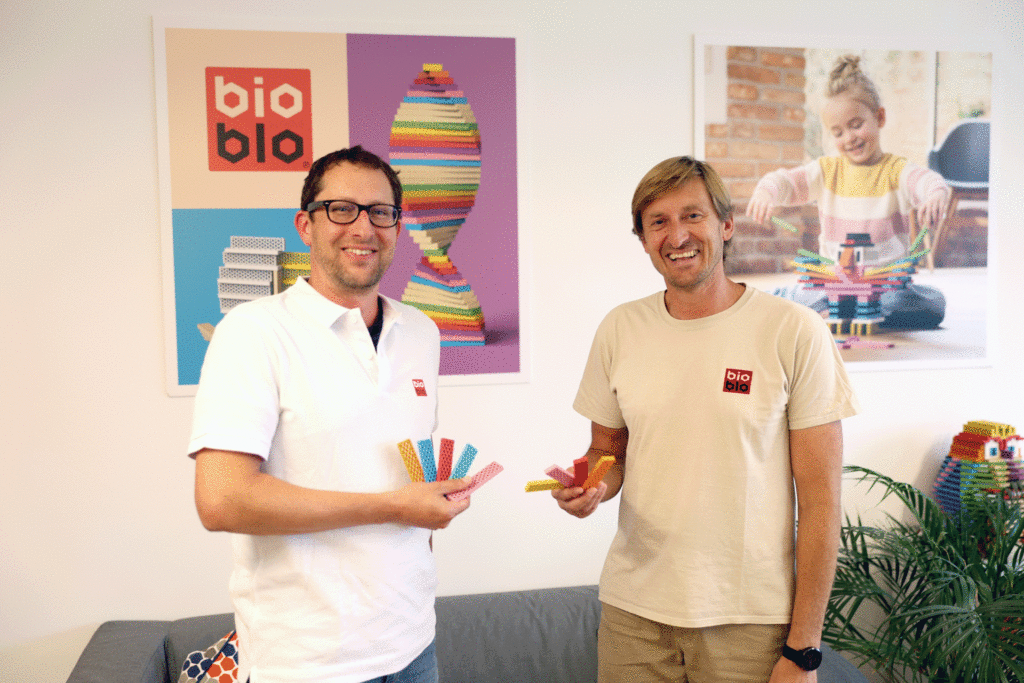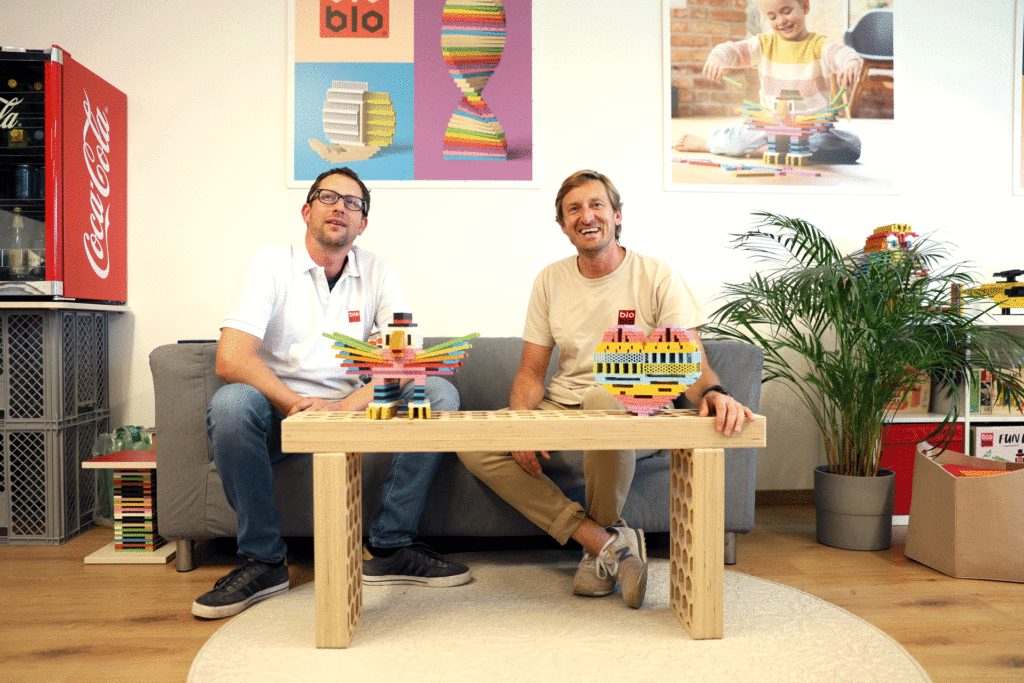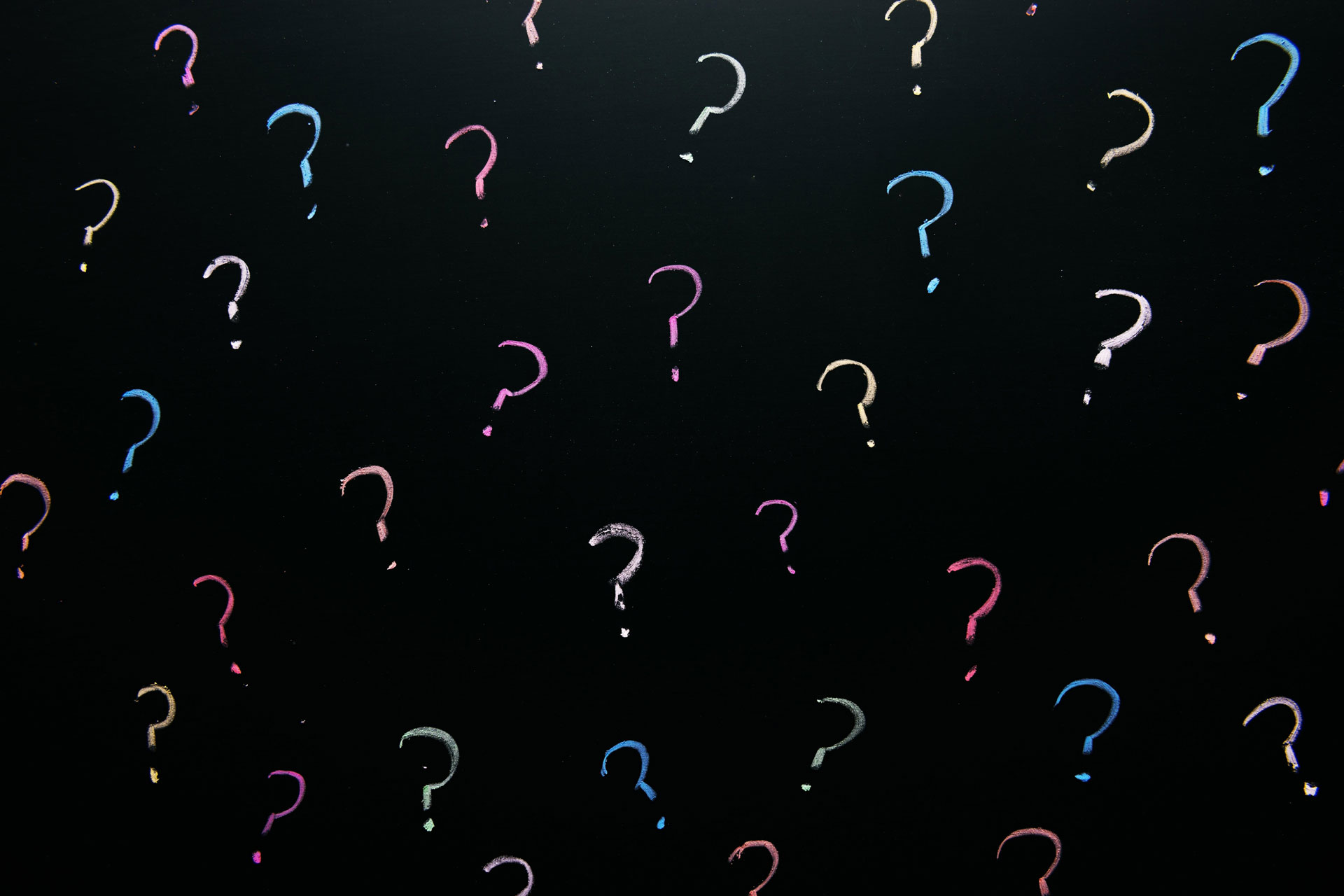We are pleased to announce that Weingut Pinetz has started the process of pro local certification.
This family-run winery, located in Frauenkirchen in the Seewinkel region of Burgenland, Austria, combines a passion for wine, regional identity, and a unique connection to animals in a truly special way.
Wollwerkstatt Niederösterreich launches pro local audit
We are pleased to announce that the renowned Wollwerkstatt Niederösterreich has decided to have its wool and wood products certified by us.
Continue readingFive varieties of Ramsa-Wolf mustard receive the pro local label
The following mustard varieties were tested:
- Englischer Spezialsenf
- Estragon Senf
- Kremser Senf
- Kürbiskern Senf
- Wiener Spezialsenf


Regional by tradition
Ramsa-Wolf is a traditional Austrian mustard manufacturer based in Vienna. The family business was founded in 1926 in Vienna-Erdberg and is about to celebrate its 100th anniversary. Today, the business is run by Katrin Segel, the 5th generation. Austrian quality, pure natural products and the finest taste are our top priorities.

Tarragon mustard and Kremser mustard have been produced since the company was founded. In the 1950s, the English Special mustard variety was added to the range, which immediately became a bestseller due to its spiciness.
To this day, the “English” is considered the hottest mustard in Austria and continues to enjoy great popularity. Since its introduction, it has been produced unchanged according to the family’s well-kept secret recipe.
Our audit focused on the following areas:
* A maximum of 3% of the product ingredients are not from Austria.
* Ramsa-Wolf production is 100% within Austria.
* All production employees are employed in Austria.
* The company pays 100% of its taxes in Austria.
As always, the result can be accessed directly via the QR code on our label.
If you want to see the result of our audit report in detail, you can also click here.
We would like to thank Ramsa-Senf for their trust in our label and their commitment to transparency and regionality and look forward to working with them for a long time to come.
Sustainability in the toy world: A conversation with the inventors of Bioblo
Sustainable play and creativity
Bioblo bricks are not just bricks – they are a springboard for children’s creative development and motor skills. The varied shapes and vibrant colors stimulate the imagination and invite endless building projects, be it erecting towers, constructing bridges or creating fantastic worlds. In this day and age where environmental protection and sustainability are becoming increasingly important, it is refreshing to see companies finding innovative ways to develop environmentally friendly products. One such company is Bioblo, an up-and-coming toy manufacturer on a mission to combine fun and creativity with environmental awareness.
In today’s interview, the two founders of Bioblo, Managing Director Stefan Friedrich and Materials Developer Hannes Frech, give us exciting insights into the toy sector and share their personal experiences on the subject of sustainability.

What motivated you to found Bioblo almost 9 years ago?
Hannes
The basic idea came from my professional context when my daughter was still playing. At that time, she was playing with wooden building blocks and the idea of making a better material or product out of them arose. I took this to the prototype stage and gave the building blocks away to friends and family. The concept then sat in a drawer for years until I met Stefan. Together we quickly found the enthusiasm to make more of it and founded the company Bioblo.
What goals have you already achieved in just under a decade and what goals do you still want to achieve?
Stefan
We have achieved the fact that we still exist. In a highly competitive market, we don’t take that for granted. We now have feedback from many school classes, kindergartens, after-school care centers and also private individuals: they tell us that they bought Bioblos and they have been used ever since. That makes us particularly proud.
Hannes
We want to create an even greater variety of sizes and colors of bricks in the future. At the same time, we want to keep the focus on free play. That’s also the reason why you can’t connect our bricks together.
How would you define sustainability from Bioblo’s point of view?
Hannes
I define sustainability as using raw materials that are either renewable natural substances – or raw materials made from materials that were originally only waste or by-products. Our plastic consists of discarded reusable drinking cups and our wood consists of shavings and sawdust from various sawmills and planing companies in German-speaking countries. This is how I define a certain sustainability at the material level through upcycling.
Stefan
We also think it’s important to make toys that last a long time and, ideally, can be passed down through the generations. Unfortunately, we’re all familiar with getting our hands on things that are very short-lived and have hardly any value. I find that sad, as they also have to be produced and consume a lot of resources. But then they go straight into the garbage can, so to speak. We want to produce exactly the opposite.
On the one hand, to find the right raw materials. Also to find the right regional suppliers to ensure consistent quality. For example, the wood must be particularly dry for processing. After that, the biggest challenge was probably finding the right production facility, as manufacturers tend to avoid using wood shavings in injection molding. We also had to manage the whole thing without becoming too expensive, as otherwise the building blocks would no longer be affordable.
What challenges did you have to overcome during the development and production of Bioblo?
Hannes
On the one hand, finding the right raw materials. Finding the right regional suppliers to ensure consistent quality. For example, the wood has to be particularly dry for processing. Then the biggest challenge was probably finding the right production facility, as manufacturers are very wary of using wood shavings in injection molding. We also had to manage the whole thing without becoming too expensive, as otherwise the building blocks would no longer be affordable.
Stefan
From a marketing and sales perspective, the first big challenge for us was to drive organic growth without a large investment. Finding the right design for our packages and gaining a foothold in stationary retail was also very exciting.
What role do large online sales platforms like Amazon play for you?
Stefan
That’s a difficult topic and one that we are still critical of today. We prefer the experience of a traditional toy store, where you can also feel our bricks. After the launch in Austria, there was also rapid interest in our bricks in Germany and we focused entirely on brick-and-mortar retail. However, we noticed that a lot of sales from there ended up on Amazon without our involvement and that we had no influence on service quality, illustrations and product descriptions. We quickly found ourselves in a defensive role. In the end, we decided to implement this type of distribution ourselves in order to have more access and protect our standards. However, our network in local, stationary retail remains our priority.
How would you describe Bioblo’s impact on sustainability in the toy sector?
Hannes
Every year in Nuremberg there is the biggest toy fair in the world, which we always visit, and there is the “Toys go green” area. Even well-known manufacturers don’t show their best side here. With a few flanks of bamboo or something similar, we get the impression that it’s more about pretending to be ecological than actually doing it. If we look at the toys in the other halls, 95% of them are made of new plastic. Nevertheless, many suppliers want to present this as sustainable in some way – but it’s not! On the other hand, it is not trivial to use recycled plastic in toys. It is difficult to obtain the certificates unless you can prove exactly where the plastic comes from, as we do. A large toy manufacturer can hardly afford to do that. I often think that we are ridiculed as the good Bioblo guys because we go to great lengths to be transparent.

When you say the big manufacturers can’t do that. Why is that?
Hannes
It’s mainly due to the quantities. The required quantity of recycled plastic in the required quality is often not available. Sometimes it’s a question of color, because black plastic can’t be used to make a yellow figure, for example.
Stefan
And the costing is much worse. Recycling results in longer processes with more work steps and higher costs. In concrete terms, this means that our “second-hand” material is often more expensive than a new raw material. Suppliers with high profit pressure naturally take the cheaper raw materials.
What features of your building blocks do you get the most feedback from customers for – is it sustainability, or is it something else?
Stefan
The play value for sure. Our building blocks are not purpose-built and this results in a very open play concept. This is very well received. The feel and especially the woody smell of the building blocks is also often given positive feedback.
Hannes
The feel and weight of the building block conveys a certain value. The colors also play a major role here. Our building blocks as a whole already have a certain color at the material level and are not painted or anything similar. Even if there is a little abrasion, the colors are retained and people notice that positively.
Who is the most creative tower builder at Bioblo?
Stefan
Everyone has their own focus, but I would say Hannes (laughs).
Hannes
I like building animals, but I can’t match the creativity of the children. We are often amazed at what the children come up with themselves. The coolest buildings and other things that we would never have thought of ourselves.
Stefan
For example, one girl discovered that you can blow soap bubbles through the honeycombs of our stones, something we would never have thought of. Lots of little bubbles come through the little holes and since we shared the idea in our folders, we keep getting pictures of Bioblo soap-blowing families. Which makes us very happy.

What little things do you think are part of a climate-friendly everyday life?
Stefan
Definitely cycling! I even have the feeling that all the e-scooters are working against the use of bicycles. If everyone cycled more and thus gave up the car, that would be good.
Hannes
Personally, I eat almost no meat. Not just because of ecology, but also because of animal welfare. Because it pisses me off that animals are locked up and transported thousands of kilometers so that I can eat a schnitzel.
Have your findings through Bioblo changed your private purchasing behavior and your view of sustainability?
Stefan
Definitely! I now pay attention to various things such as the origin of the ingredients, what are the transportation routes, where is it sold. How is it communicated and what is advertised – are the suppliers honest, do they do greenwashing and to what extent is there transparency? I have become much more critical in this respect. As a rule, I also try to buy more locally because I become aware of the distances that different goods actually travel.
Hannes
As Stefan says, you get a deeper insight into how goods are transported. I’m always shocked at how cheaply you can buy things whose components have already been around the world several times. When I compare our locally produced building blocks and say they are “only” building blocks and what it costs us to produce them… I wonder how, for example, something more complex like a small remote-controlled car from the Far East can sometimes be cheaper in the shops. That remains a mystery to me.
How important do you think regional value creation is in this context?
Hannes
I think regionality is very, very important. In general, that different companies can live and survive here. Regionality is also super important because of the climate friendliness due to shorter transportation routes.
Stefan
Unfortunately, it is sometimes difficult to implement. We try to implement the areas that we can directly control locally. Our packaging comes from Tyrol, for example, and our raw materials also come from Austria and Germany. Production is currently in Croatia. That’s not far away – and we ruled out Far East production from the outset anyway. We are more interested in bringing production entirely to Austria. But that depends on many factors, some of which we can’t influence. In any case, it is important to be transparent and honest about the manufacturing conditions.
Do you think labels are an effective way to create more transparency in consumption?
Stefan
For us, the value of a label depends on its credibility. This applies to companies that trust a label and can afford it, as well as ultimately to consumers. I think there are very few labels that have such value. With everything I know about pro local so far, this is one of them for me, as it is implemented very conscientiously. We are very proud to have the Austrian Ecolabel and the Blue Angel. This definitely makes us stand out in the toy sector. The Green Product Award in our very first year was also a great endorsement of what we do. The awards and certifications help us to be transparent and communicate our values.
In your opinion, what incentives would motivate even more people to act in a more sustainable and climate-friendly way?
Stefan
To put it in a nutshell: The more sustainable product should be the cheaper one. The question is whether we will ever live in a world where that can be the case. There should be a reward for ecological behavior!
Hannes
In the long term, all the products that can’t be recycled, or all the crap that is sold cheaply, causes considerable environmental damage. This is a huge financial loss and even has health implications. In addition to us polluters, future generations will also have to pay for this. I believe a financial incentive would make it much easier for many people to act in an ecologically sustainable way and, on the other hand, save costs in eliminating negative environmental consequences.
We would like to thank Stefan and Hannes for the very pleasant and informative interview and wish Bioblo all the best on their inspiring and sustainable journey.
If you want to learn more about Bioblo click here and visit the Bioblo website.
Ramsa-Wolf has registered five mustard varieties for certification by pro local
We are pleased to announce that the renowned Austrian family business Ramsa-Wolf has decided to have five of its well-known Austrian mustard varieties tested by us.
Continue readingpro local Quiz March
Test your knowledge on the topics of Europe, climate, sustainability and regionalism. 10 questions await you in our monthly quiz.
Continue readingpro local Quiz February
Test your knowledge on the topics of Europe, climate, sustainability and regionalism. 10 questions await you in our monthly quiz.
Continue readingNew Year’s Eve raclette
“Make winter vegetables sexy again”
Surprise your friends or relatives with an original composition of an unconventional but regional selection of winter vegetables for the stone barbecue.
Continue readingpro local Christmas Quiz
Test your knowledge on the topic christmas in Europe. 10 questions await you in our monthly quiz.
Continue readingCandles and sustainability
Do they go together?
The days are getting shorter and Advent is beginning. It’s the time of year when candles light up and wrap windowsills and the Advent wreath in a warm glow.
Continue reading







